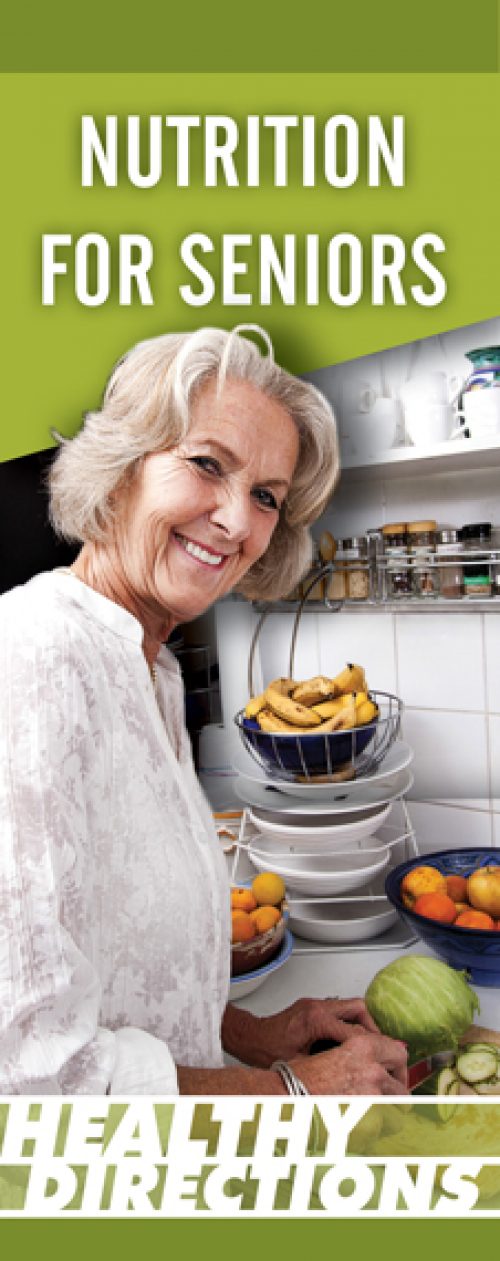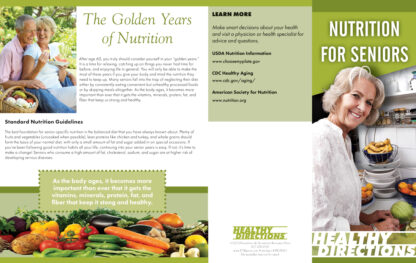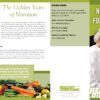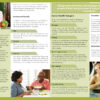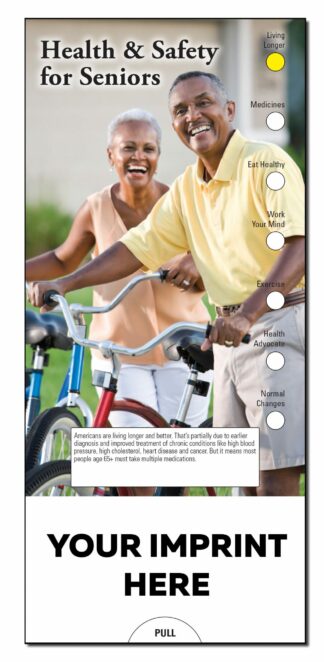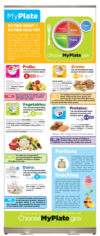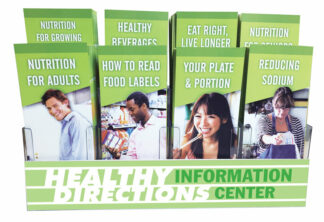Healthy Directions: Nutrition for Seniors Pamphlet
SKU: PB-PH23 Minimum Qty: 100- Reminds seniors to avoid processed foods
- Notes that seniors need fewer calories
- Discusses digestion issues
- Identifies essential nutrients
- Examines health risks that seniors face
- Suggests adequate physical exercise
- Sold in packs of 50
| 100-499 | 500-999 | 1000-2499 | 2500-4999 | 5000+ |
| $0.52 | $0.43 | $0.39 | $0.35 | $0.33 |
$0.47
Description
This Nutrition for Seniors pamphlet addresses dietary needs for healthy seniors. In the retirement years, senior citizens have a wonderful opportunity to relax and catch up on things for which they never had time before. To some, this freedom also means that they stop paying attention to maintaining a balanced diet and instead, rely on convenient and processed food. But it’s in these “golden years” that proper nutrition becomes more important than ever.
Standard nutritional guidelines don’t change once a person is over the age of 60. They should still eat many fruits and vegetables, whole grains, and lean proteins. If healthy eating has been a lifelong habit, then there shouldn’t be any problem continuing on that path. Seniors who have never paid attention to their nutrition should start immediately. They may be more likely to develop serious diseases because of their past nutritional habits.
Caloric needs change as a person grows older. Many seniors spend less time engaging in physical activity and as such, their bodies don’t burn as many calories. Older individuals should adjust their caloric intake to match their activity level. This adjustment should not entail skipping meals, however. Not eating can lead to malnutrition, which is a common issue among senior citizens.
Growing older may also affect an individual’s ability to process food effectively. Spicy and acidic foods should be avoided and fiber intake should increase. Poor oral health can also contribute to problems processing food as it may become more difficult to chew and swallow.
Seniors should pay attention to their diet to ensure that they are getting enough of certain nutrients, namely fiber, calcium, and vitamins.
Fiber is crucial for digestive health and it also fights high cholesterol. Calcium helps to strengthen bones, which can grow weaker with age. And vitamins can help maintain brain function and eyesight, among other things. Supplements can be taken to provide these nutrients, but if possible, seniors should try to add foods that are rich in these nutrients to their diet.
This nutrition for seniors pamphlet addresses how important healthy eating habits are for geriatrics. Healthy eating habits can help to ward off a number of disease as a person ages. Controlling sugar intake may prevent diabetes from developing. Obesity can contribute to diabetes and heart disease and it also negatively affects joints and the skeletal system. Limiting excessive calorie and fat consumption is helpful in maintaining an ideal weight. Issues like high cholesterol and blood pressure might lead to heart attacks or strokes. Increasing fiber and reducing fatty foods can help to reduce the risk of these problems.
Senior citizens need to pay attention to their sodium intake as too much of it can lead to high blood pressure. Checking food labels and using salt substitutions can make it easier to ensure that the appropriate guidelines are being followed. Cognitive ability and mental health can be affected by a poor diet.
A diet that’s rich in nutrients can help to stave off dementia and cognitive decline.
Many seniors don’t get enough exercise, which may impair their digestive abilities. Exercise does not need to include vigorous sessions of weight training or cardiovascular activities. But adding regular walks to the weekly routine can be enough to benefit physical health.
The “golden years” include many changes, both physical and mental. By paying attention to these changes and adjusting course as necessary, seniors can maximize their vitality.
To see a full PDF version of this pamphlet, click the Instant Preview tab above.
This brochure is also available in Spanish.
If you like this seniors pamphlet, then check out more of our Health and Nutrition materials here.
For more pamphlet topics, click here.
To learn more about proper nutrition at ChooseMyPlate.gov.
Additional information
| Weight | 0.02 oz |
|---|---|
| Dimensions | 9.5 × 3.75 × .01 in |
| Grade Level | All Ages |
| Type | |
| Free Sample | Yes |
| Minimum Order Quantity | 100 |
| Sold in Multiples Of | 50 |

